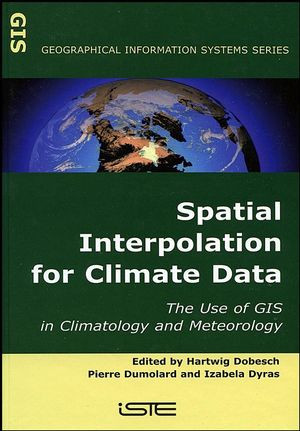Product desciption
Spatial Interpolation For Climate Data The Use Of Gis In Climatology And Meteorology Hartwigdobesch by Hartwig-dobesch 9780470612262, 9781905209705, 0470612266, 1905209703 instant download after payment.
This title gives an authoritative look at the use of Geographical Information Systems (GIS) in climatology and meterology. GIS provides a range of strategies, from traditional methods, such as those for hydromet database analysis and management, to new developing methods. As such, this book will provide a useful reference tool in this important aspect of climatology and meterology study.Content:
Chapter 1 GIS, Climatology and Meteorology (pages 3–24): Antonio Perdigao
Chapter 2 SIGMA: A Web?Based GIS for Environmental Applications (pages 25–34): Carlos Frederico Angelis, Fabiano Morelli, Luiz Augusto Toledo Machado and Cintia Pereira De Freitas
Chapter 3 Web Mapping: Different Solutions using GIS (pages 35–44): Pawel Madej, Malgorzata Barszczynska and Danuta Kubacka
Chapter 4 Comparison of Geostatistical and Meteorological Interpolation Methods (What is What?) (pages 45–56): Tamas Szentimrey, Zita Bihari and Sandor Szalai
Chapter 5 Uncertainty from Spatial Sampling: A Case Study in the French Alps (pages 57–70): Pierre Dumolard
Chapter 6 The Developments in Spatialization of Meteorological and Climatological Elements (pages 73–86): Ole Einar Tveito
Chapter 7 The Spatial Analysis of the Selected Meteorological Fields in the Example of Poland (pages 87–96): Izabela Dyras and Zbigniew Ustrnul
Chapter 8 Optimizing the Interpolation of Temperatures by GIS: A Space Analysis Approach (pages 97–107): Jean?Christophe Loubier
Chapter 9 Daily Winter Air Temperature Mapping in Mountainous Areas (pages 109–120): Remi Lhotellier
Chapter 10 Aspects Concerning the Spatialization of Radiation Balance Components (pages 121–137): Cristian Valeriu Patriche
Chapter 11 The Use of GIS Applications in Meteorology and Climatology: A Need for the Application of Regional Ecological Modeling Approaches (pages 141–154): Martin Wegehenkel
Chapter 12 GIS Application to Daily Fire Risk Mapping (pages 155–164): Alvaro Silva
Chapter 13 Application of GIS Technology on the Comparisons of Climatological Databases: An Overview of Winter Precipitation over Spain (pages 165–178): M. Y. Luna, M. L. Martin, M. G. Sotillo, C. Almarza, F. Valero and J. De La Cruz
Chapter 14 Drought Sensitivity Research in Hungary and Influence of Climate Change on Drought Sensitivity (pages 179–188): Sandor Szalai, Szabolcs Bella and Akos Nemeth
Chapter 15 First Steps Towards a New Temperature Climatology of the Greater Alpine Region (GAR) (pages 189–197): Wolfgang Schoner, Ingeborg Auer and Reinhard Bohm
Chapter 16 XRWIS: A New GIS Paradigm for Winter Road Maintenance (pages 199–211): John E. Thornes, Lee Chapman and Steve White
Chapter 17 The Use of GIS in Climatology: Challenges in Fine Scale Applications: Examples in Agrometeorological and Urban Climate Studies (pages 215–225): Claude Kergomard
Chapter 18 Climate Impact on the Winter Land Use and Land Cover Management in Brittany (pages 227–241): S. Corgne, H. Quenol, O. Planchon and T. Corpetti
Chapter 19 A Tool for the Integrated Use of Remote Sensing with Ground Truth Data: DEMETER Project (pages 243–252): A. Perdigao, A. Jochum, A. Calera, L. Pessanha, A. Chinita and J. Maia
Chapter 20 Assessing Population Exposure to Odorous Pollution from a Landfill over Complex Terrain (pages 253–263): Caroline Riesenmey, Charles Chemel, Herve Vaillant and Mireille Batton?Hubert
Chapter 21 Disaggregated Estimation of N2O Fluxes from Agricultural Soils of the Italian Region by Modelization in GIS Environment (pages 265–276): Anna Carfora, Simona Castaldi, Marco Vigliotti and Riccardo Valentini


